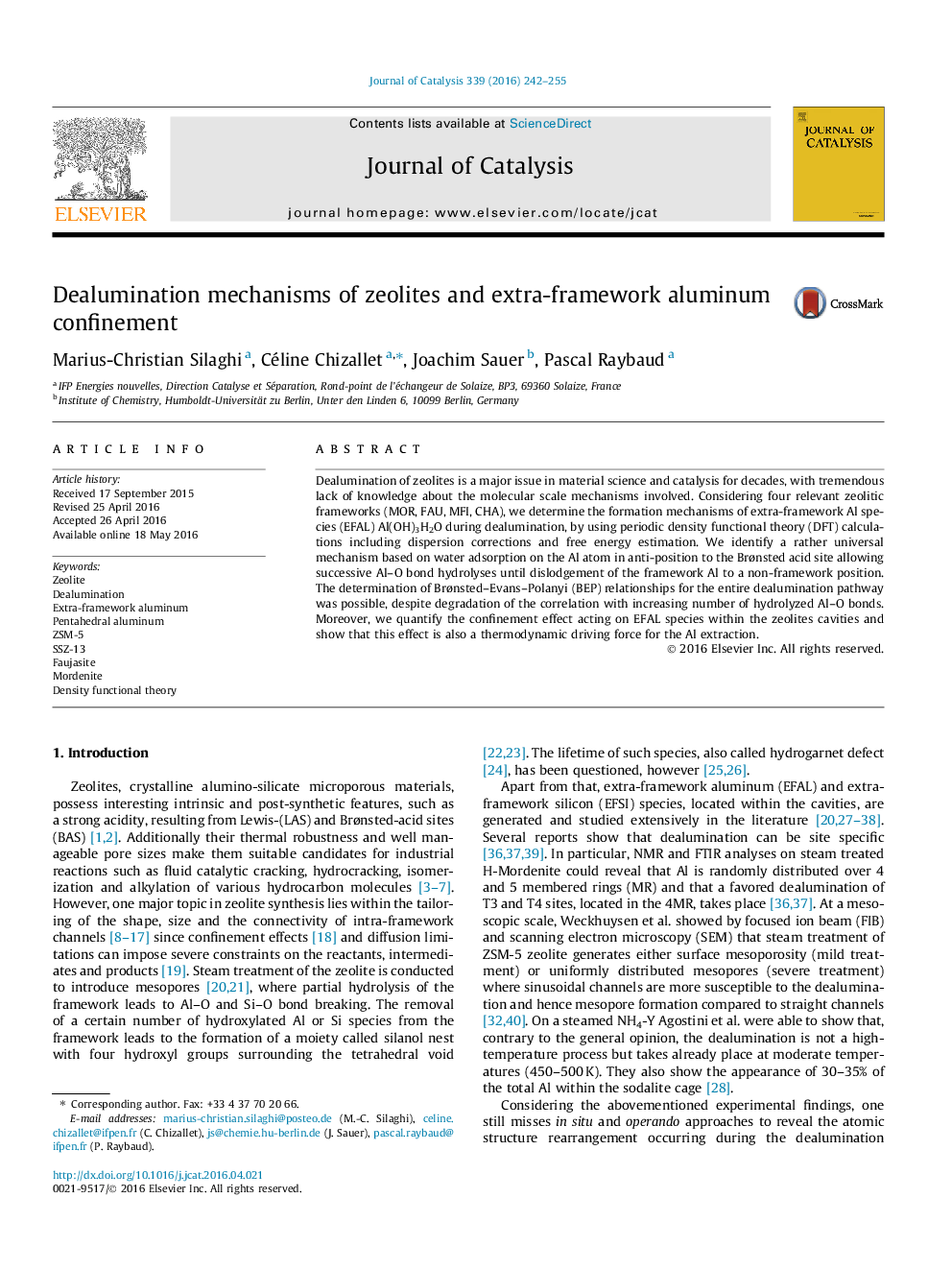| Article ID | Journal | Published Year | Pages | File Type |
|---|---|---|---|---|
| 60582 | Journal of Catalysis | 2016 | 14 Pages |
•Mechanisms for zeolite dealumination are unraveled by DFT calculations.•Water molecules adsorb on Al, in anti to Brønsted acid sites, before Al–O breaking.•Various orientations for Al–O breaking can take place at high water loadings.•BEP relationships exist but degrade as hydrolyzed Al–O bonds are more numerous.•Both free energy barriers and EFAL confinement are driving forces for the regioselectivity.
Dealumination of zeolites is a major issue in material science and catalysis for decades, with tremendous lack of knowledge about the molecular scale mechanisms involved. Considering four relevant zeolitic frameworks (MOR, FAU, MFI, CHA), we determine the formation mechanisms of extra-framework Al species (EFAL) Al(OH)3H2O during dealumination, by using periodic density functional theory (DFT) calculations including dispersion corrections and free energy estimation. We identify a rather universal mechanism based on water adsorption on the Al atom in anti-position to the Brønsted acid site allowing successive Al–O bond hydrolyses until dislodgement of the framework Al to a non-framework position. The determination of Brønsted–Evans–Polanyi (BEP) relationships for the entire dealumination pathway was possible, despite degradation of the correlation with increasing number of hydrolyzed Al–O bonds. Moreover, we quantify the confinement effect acting on EFAL species within the zeolites cavities and show that this effect is also a thermodynamic driving force for the Al extraction.
Graphical abstractFigure optionsDownload full-size imageDownload high-quality image (62 K)Download as PowerPoint slide
